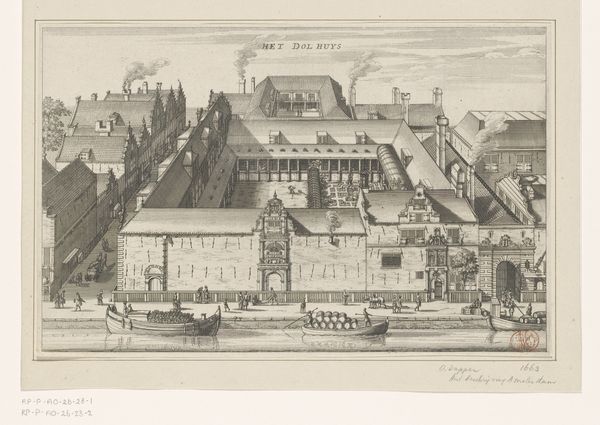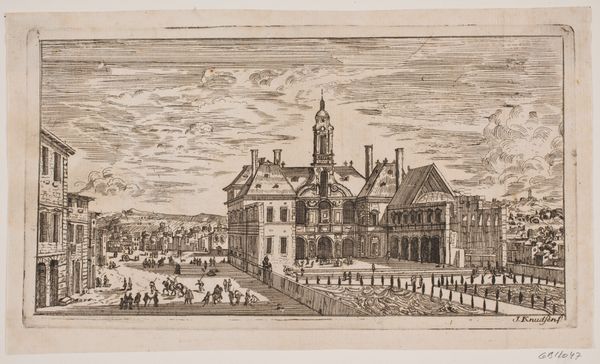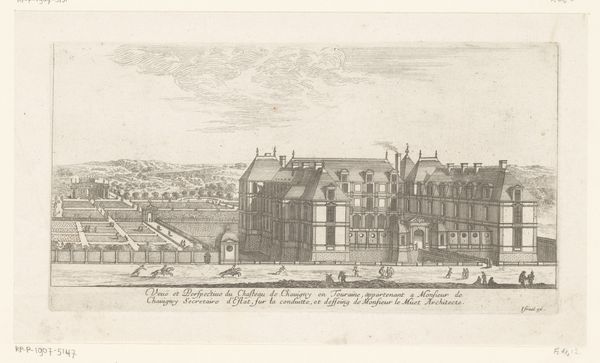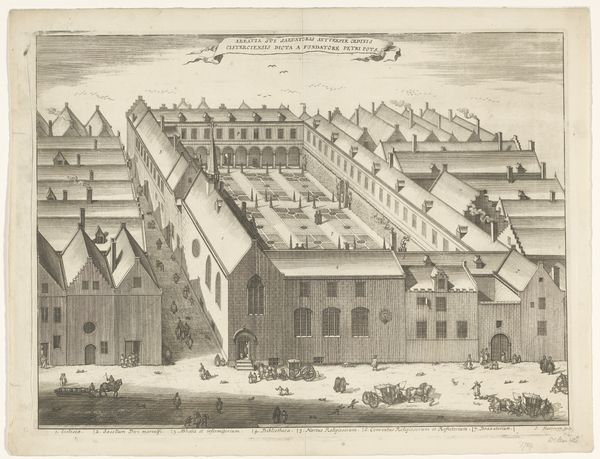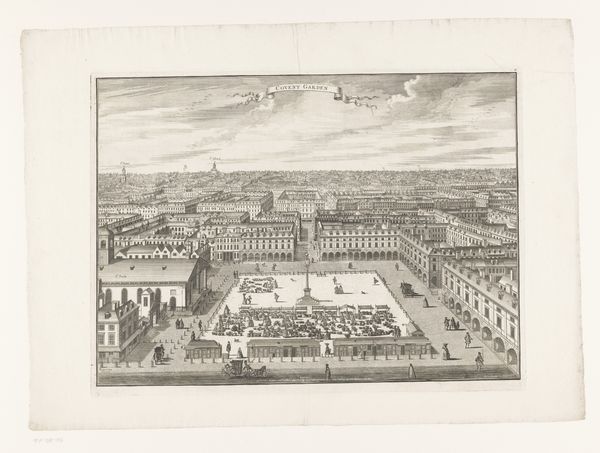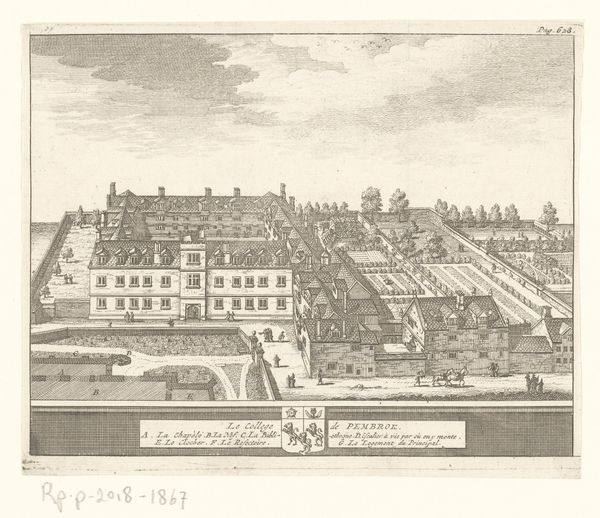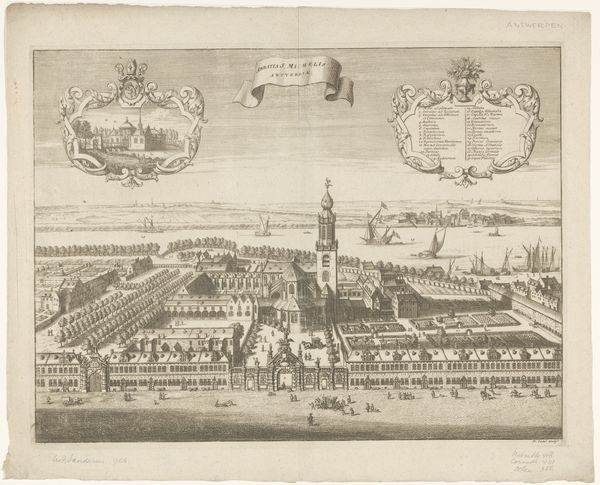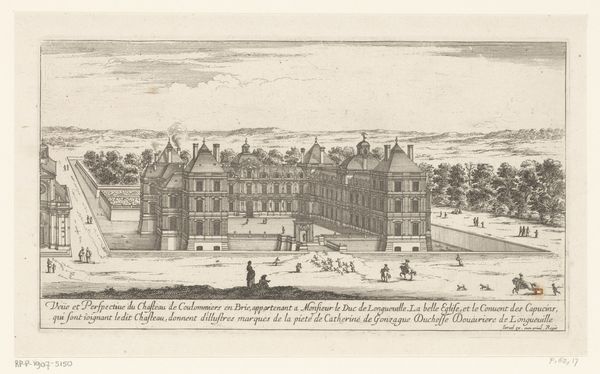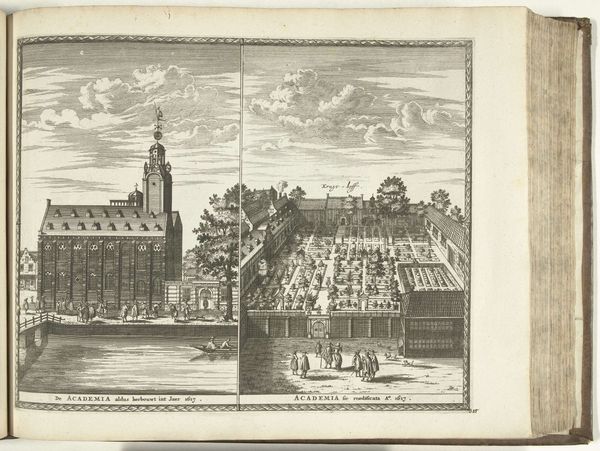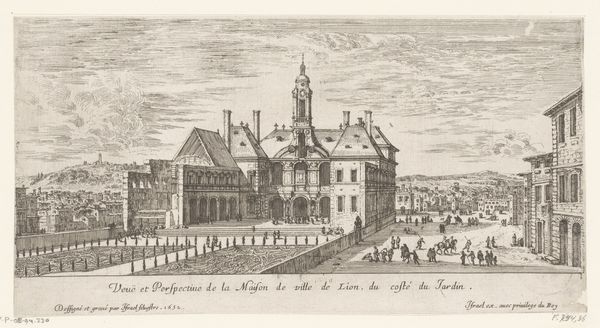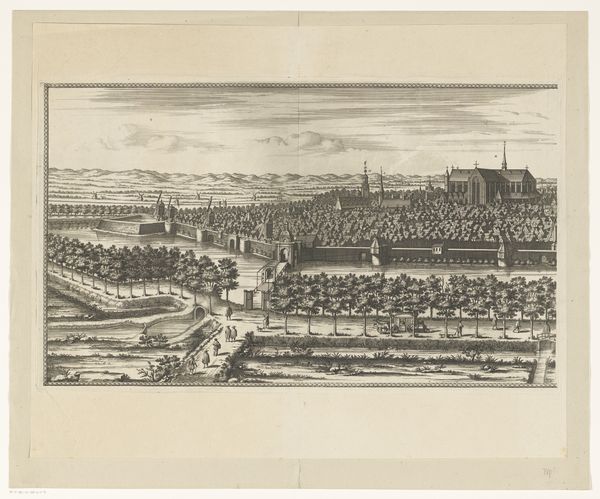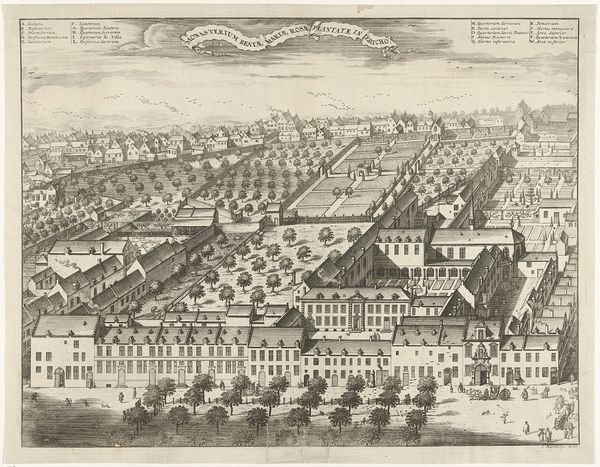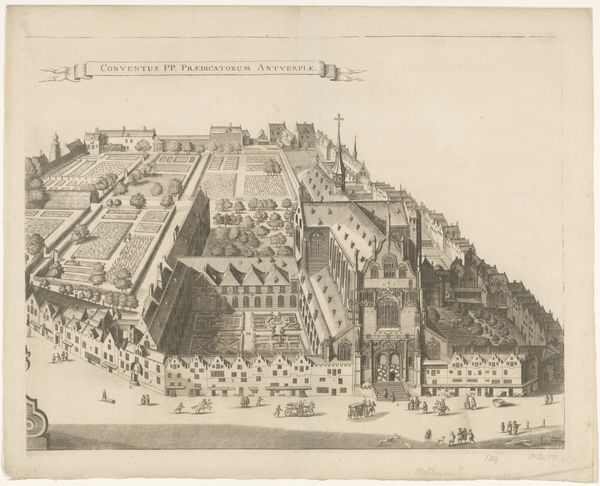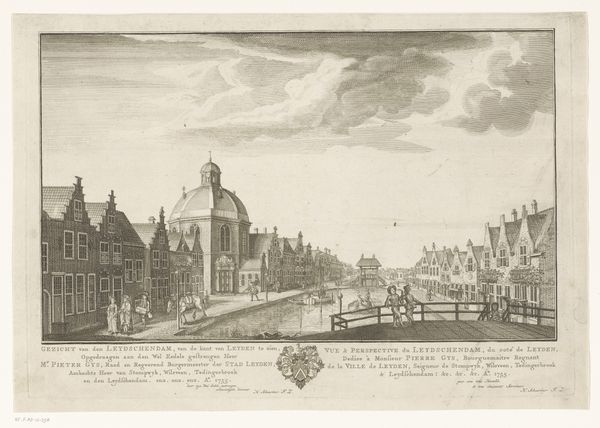
print, etching, engraving, architecture
#
dutch-golden-age
# print
#
etching
#
old engraving style
#
landscape
#
cityscape
#
engraving
#
architecture
Dimensions: height 191 mm, width 298 mm
Copyright: Rijks Museum: Open Domain
Jacob van Meurs’s "View of the Prinsenhof in Amsterdam" was made in the 17th century using the technique of etching. The intricate details of the architectural landscape are achieved by drawing through a prepared ground on a metal plate, which is then bitten by acid to create recessed lines, capable of holding ink. The linear precision allowed by etching lends itself well to depicting architectural details and urban planning. Van Meurs likely utilized a combination of skilled draftsmanship and technical knowledge to transfer his vision onto the plate. The process, while indirect, demands a keen understanding of materials and their capabilities. Prints like this played a crucial role in disseminating information and shaping perceptions of urban spaces. More than mere reproductions, they were tools in constructing a visual identity for a city on the rise, deeply tied to trade, labor, and civic pride. By looking closely at the materiality and making of this print, we gain insight into the values and priorities of Amsterdam’s Golden Age, highlighting the interconnections between art, society, and industry.
Comments
No comments
Be the first to comment and join the conversation on the ultimate creative platform.
